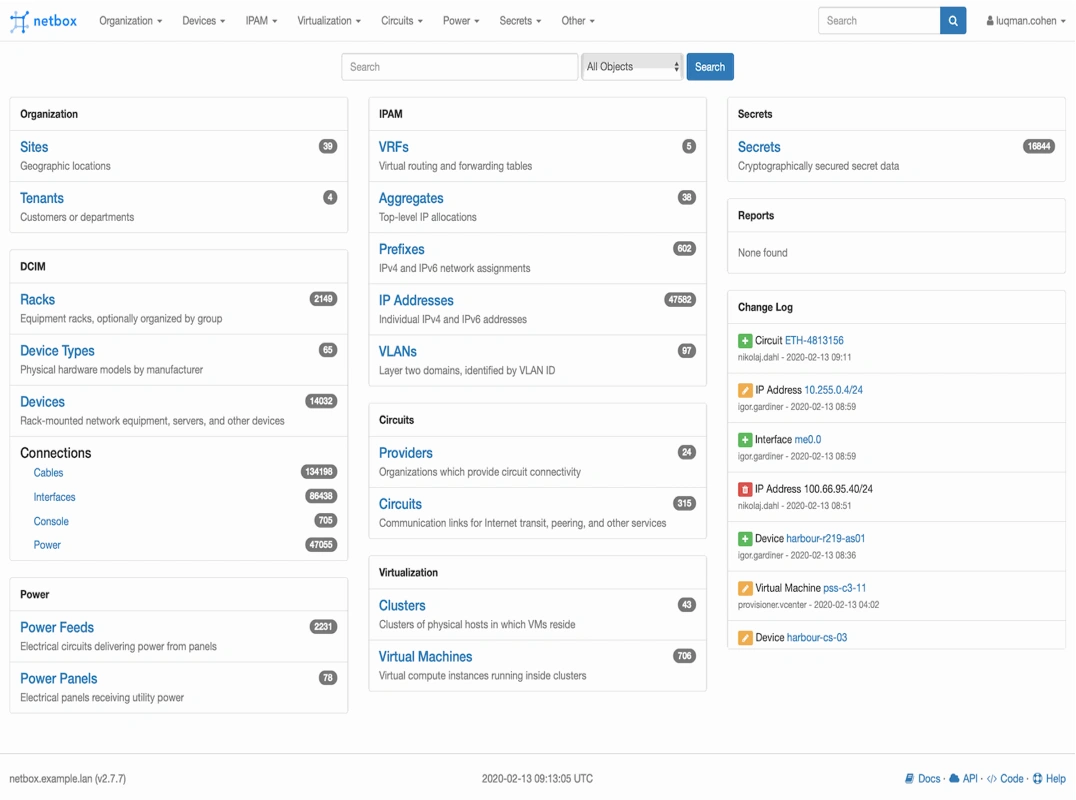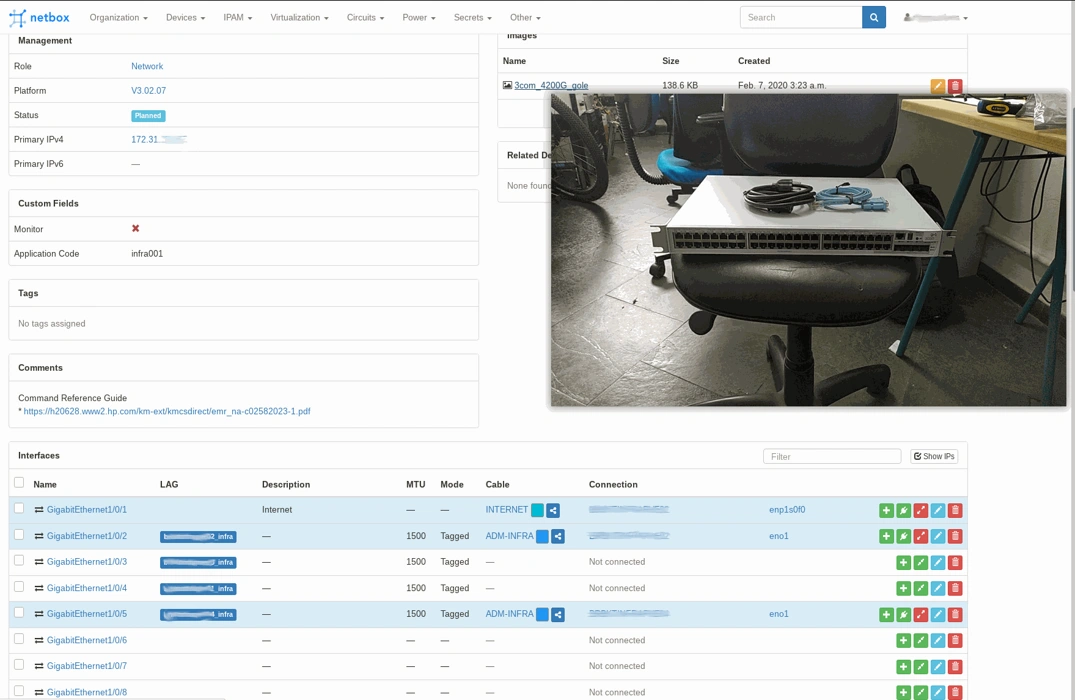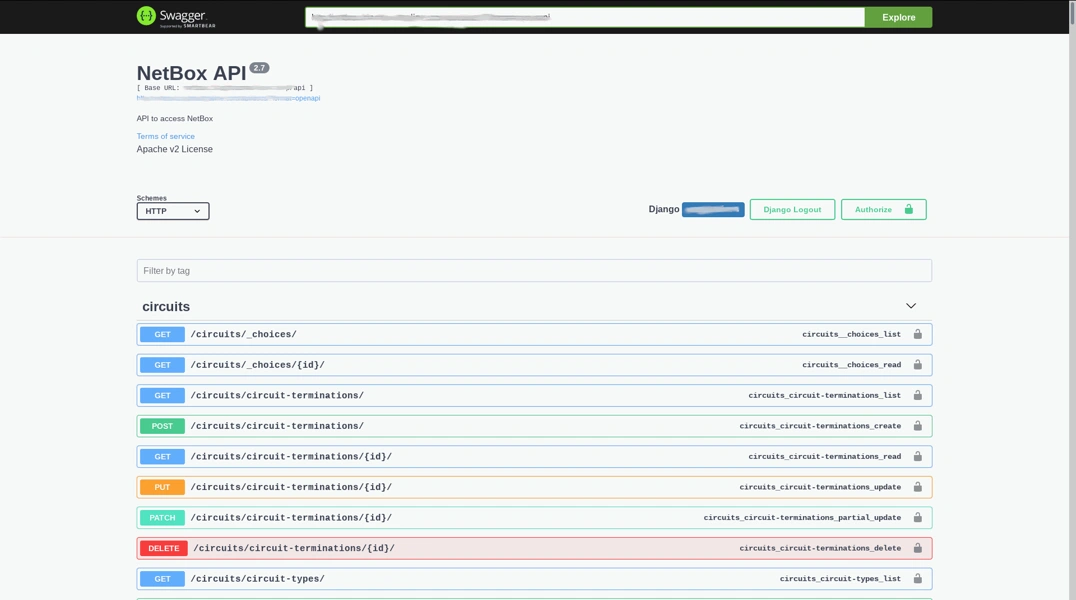


A super tool for managing your infrastructure.
Netbox is much more than what we are going to talk about in this blog article.
Our idea is to index content in Portuguese about this wonderful tool that helps us a lot in organizing both the logical and physical part of IT.
Netbox IPAM/DCIM group link - BR: https://t.me/netboxbr
If you want Gole consulting for the implementation, automation and integration of Netbox with different services of your company, contact us. contact us.
IP address management (IPAM) is the methodology that allows us to manage everything related to IP. Everything that encompasses the logical universe of the TCP/IP model. With an IPAM you can manage IPv4, IPv6, VLANs, Subnets, IPs. And for each of these options, you can assign tags, roles, and many other things. This may seem unnecessary, but when you have a network with more than 512 hosts, administering and maintaining the security of this network without an IPAM can be a very complicated task. In this Wikipedia link, we have a very complete table of many IPAM tools.
Data center-infrastructure management (DCIM) is the methodology whose mission is to integrate infrastructure equipment with the team that provides services to the company. Provide IT people with all the information on the equipment and hosts that represent their infrastructure.
The virtualization team needs to know which port of the enclosure the SAN switch is connected to, it needs to know which racks have available space. Meanwhile, the network team needs to know which rack contains the MPLS routers, and which switches have the XPTO firmware version.
This information is an example of where DCIM makes all the difference.
When it comes time to build capacity plain, DCIM is also an indispensable tool.
Netbox is an open source tool that uses the license Apache 2.0. Your official documentation is available on the portal Read the Docs, portal which contains documentation of several other open source projects. The project was created by Jeremy Stretch, who worked as a network developer (Network Developer) at Digital Ocean.
With the evolution of Netbox, many people started to collaborate with the codes. Among these people is John Anderson, who, participating in several validations and important contributions in the back-end, also helped to improve the web interface, which has always been built with the Django framework.
After a few years Jeremy Stretch and John Anderson, along with other engineers and developers, created the company called Network to code.
It is possible to merge part of the installation in the S.O. and another part with Docker, it only depends on knowledge in docker.
The installation process is well described, so we don’t need to go into it. Our intention is only to present the existence of the tool.
Once we have Netbox running and we have created the user in /admin, we can access its web interface.
When we access Netbox through the web interface, we can visualize the menu that is above the entire site.
The topics organization, devices, IPAM, virtualization, circuits, Power, secrets and others, represent the first concept that we should pay attention to.
Each topic can target a different group of people. That is, a person who takes care of the physical structures and racks may not have access to the device configuration, and the people who take care of the devices may not have access to the virtualization menu. And we can also define the profile levels, that is, it is possible that the team that has access to the devices has read-only access to the entire universe that is within IPAM, or even more, that it can create IPs and cannot register subnets or VLANs.
These are examples, since it is possible to customize accesses as we see fit.
We can also authenticate Netbox against LDAP, Active Directory and other forms of authentication.

We can see the wealth of detail and care that Netbox brings. In this example we can visualize the link between the physical location, with the tenant, with the rack and with the devices.
We can also see that it is possible to define colors for each type of device, in addition to many other things.

In the prefixes menu, we can see the integration between roles, VLANs, IPs, percentage of network utilization.
We can also observe on the right, that we always have the possibility to search the different options with a filter. It’s very powerful!

On this screen we are inside a device.
In this example, we can see that the device has an associated primary_ipv4, it has a status of planned, it has the role of network, since the attached image shows us that it is a switch. We also have the switch platform, and support for comments and tags.
In the interfaces part, we can connect these interfaces with the other registered devices. We can define if the interface uses LAG, if it is a bond, if it is virtual, the MTU, the connection type, MAC Address, in short, everything we need.

Anyone who is used to working with APIs knows how good it is when we find an API that is documented using Swagger.
Netbox has the most complete and beautifully documented API, evidently occupying swagger. It is possible to do all the action via the Web or via API, so it is possible to automate all the insertion and obtaining of information!

The truth is that this is a quick summary of what you can do with Netbox.
We participate in implementations in multinational companies with more than 3,000 physical sites, and more than 5 Data Centers. The organization and transparency, the integration between the internal teams, it was incredible to see the positive points of this tool.
Netbox also allows native integration with Ansible, Salt, Stack Storm, and many others, not limited to these tools, you can develop your own integrations.
Long live Netbox!